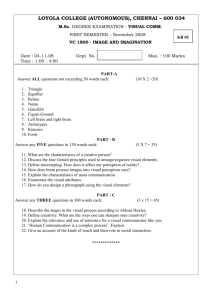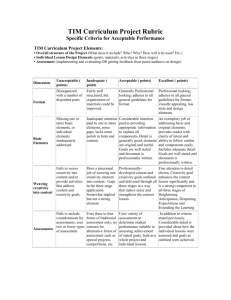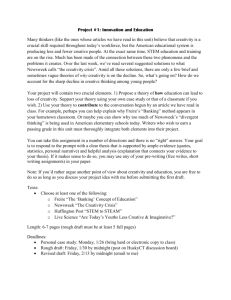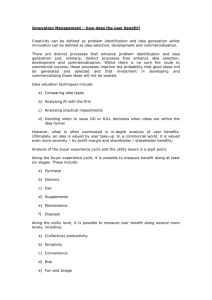creativity-and-the-brain
advertisement
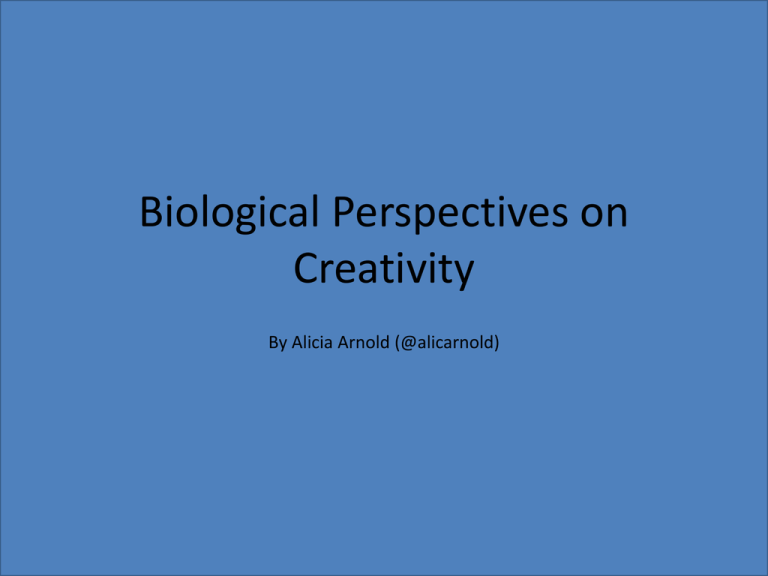
Biological Perspectives on Creativity By Alicia Arnold (@alicarnold) Not only should the idea of “rightbrained creativity” be rejected, the idea of one part of the brain being responsible for creativity is inaccurate The human brain supports different kinds of creativity, but different human brains lead to different kinds of creativity The prefrontal cortex contributes to creative thinking in three ways: 1.Necessary for judgment about an idea or solution 1.Assists with necessary integrations after an insight occurs 1.Assists with idea implementation (Thought to be responsible for higher cognitive functions, including attention, perception, memory, arousal, self-reflection and perhaps consciousness. May be involved in tasks requiring musical, visual, and verbal activity. Brain images of people listening to music show activity in different parts of the brain. Schlaug (2001) reported there are particular areas of the brain which show idiosyncrasies in musicians including the motor cortex, the cerebellum and the corpus callosum. http://www.nytimes.com/2006/12/31/arts/music/31thom.html “This colorful brain image is like a map of mental speed. The bright spaghetti structures represent the pathways connecting different brain cells.” http://www.npr.org/templates/story/story.php?storyId=102169531 What role does genetics play? According to researcher, Paul Thompson, PhD, the above graphic represents inherited ability. But… http://www.npr.org/templates/story/story.php?storyId=102169531 Research shows, we’re not stuck with the brain we inherit. The brain is like a muscle, the more you work it the more efficient it gets. It helps to have certain genes, but anyone can get stronger or faster by working out. Practice creativity and you shall become more creative.




